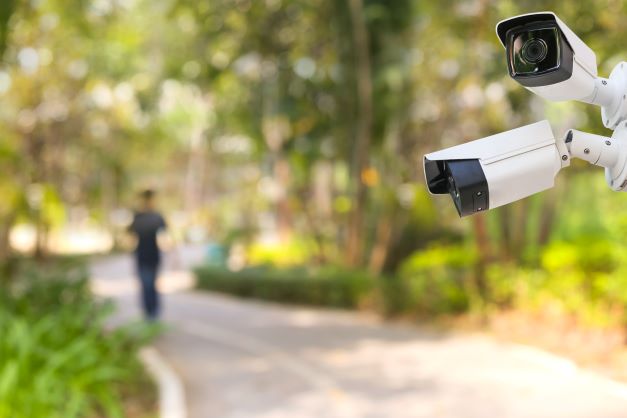Urban Design, Green Spaces, and Video Analysis

Video Analytics for Urban Environmental Health & Wellbeing
We all want to live in thriving communities and – by today’s metropolitan standards – this often means accessible, safe, and – increasingly – sustainable spaces. Green spaces, or designated natural oases in otherwise developed urban areas, have, therefore, become a major driver of city sustainability. Adding and expanding green spaces has become a key strategy for attracting new and retaining current residents and increasing their quality of life.
While the importance of green spaces is clear to urban designers, they face challenges when it comes to making decisions about where these spaces belong and their size and scope. In smart cities, strategic decisions are data-driven and technologies from the fields of IoT, connectivity, and analytics are key investments that help overcome these challenges.
As with any problem, urban planners can approach this hurdle by considering how they can maximize their existing investments for additional value across municipal business units. Many cities have already invested in video surveillance for law enforcement, security monitoring, and post-incident investigations. By enhancing these resources with intelligent video analytics, urban planners can identify the optimal locations for green spaces and other critical infrastructure, justify investments based on quantifiable and qualitative data, and measure the impact of urban design enhancements with ongoing data analysis.
Green Spaces in Smart Cities
Parks and green spaces increase a city’s appeal to potential and existing residents. In fact, the World Health Organization considers access to green spaces to be an important factor in human health and wellbeing. An important component of any community, green spaces are areas for residents to gather, exercise, and connect with nature.
Smart Cities that are committed to leveraging Big Data and technology to increase efficiencies, improve residential wellbeing, optimize municipal operations, and secure the city, can also address urban design and green space planning with their technology investments, such as video analytics.
Intelligent video analysis enables cities to leverage surveillance video as data, which was previously underutilized. By making sense of unstructured video metadata through machine-learning techniques, video analysis technology empowers cities to unlock the value of their video surveillance to enhance public safety and advance sustainability.
By extracting a wealth of operational intelligence from video surveillance intelligence, urban planners can track public transit usage patterns, vehicular and pedestrian traffic trends, and when to expect deviations from normal behavior. By visualizing video metadata to uncover how city spaces and resources are used, urban planners can make data-driven decisions about the optimal placement for city infrastructure, public transit access points, and even green spaces.
For instance, cities could use heatmap and traffic data to understand how visitors are using existing green spaces. Frequent crowding could indicate the need to expand a public park. Conversely, the analysis might reveal that a green space is being underutilized, which may necessitate adding public transit infrastructure or parking to make the area more accessible and convenient for visitors. Understanding the quantity of children that pass through a green space might help inform decisions about planning playgrounds and toy structures. This and additional information enables intelligent decision-making when it comes to planning transit routes and accessibility, developing nearby commercial spaces and attracting businesses relevant to the visiting population, as well as identifying which park amenities are and are not attractive to visitors (and when).
Reducing Waste and Increasing Sustainability
A key priority for many cities is making sure that city resources are being utilized fully and efficiently and reducing waste. Video analytics can support this objective, as well, by providing urban planners with insight into city traffic and infrastructure usage. By understanding when and where pedestrian movement is expected throughout a day or week, cities can make smarter decisions about lighting and ensure that lighting is only activated at times when areas are in use. Conversely, the city might identify heavily trafficked areas are not well-lit at night and increase safety by making changes to the illumination patterns.
Optimizing Traffic Flows with Video Intelligence
Video analytics powerfully provide actionable intelligence to stakeholders across the municipal government. In addition to designers focused on developing green spaces and expanding sustainability initiatives, urban transit departments can also leverage video intelligence for data-driven traffic optimization. By improving traffic flows in a city – whether it’s pedestrian, bicycle, or vehicular traffic, as well as public transit infrastructure – city transit authorities can positively impact both the environment and the efficiency of navigating the city with video intelligence.
By identifying where and when residents and visitors are more likely to walk than leverage a car, public transit, or a bike or scooter, city planners can make more pointed decisions about pedestrian walkways, crosswalks, and traffic lights. By tracking bicycle or scooter traffic in the city, planners can understand where bike lanes would be impactful and create the infrastructure needed to attract residents to opt for biking over driving – having a long-term impact on the environment.
Similarly, the transit authority can leverage video data to detect inefficiencies and bottlenecks in the bus or train schedules and formulate better timetables based on residents’ needs. Better public transport and accessible pedestrian and biking options can minimize the allure of driving in a city, but even drivers can feel the benefits of city planning driven by video insights. Traffic planners can utilize video data for optimizing traffic flows, identifying the need for parking lots and traffic infrastructure, and proactively planning for expected changes in traffic flows.
Planning for the Smart Future Today
Along with other core smart city technologies, video analytics is supporting urban planners and city officials in creating a cleaner, more sustainable future. Data-driven decision making empowers cities to improve resident and visitor wellbeing, while proactively preparing for population growth, tourism, and economic development.
Signup to receive a monthly blog digest.